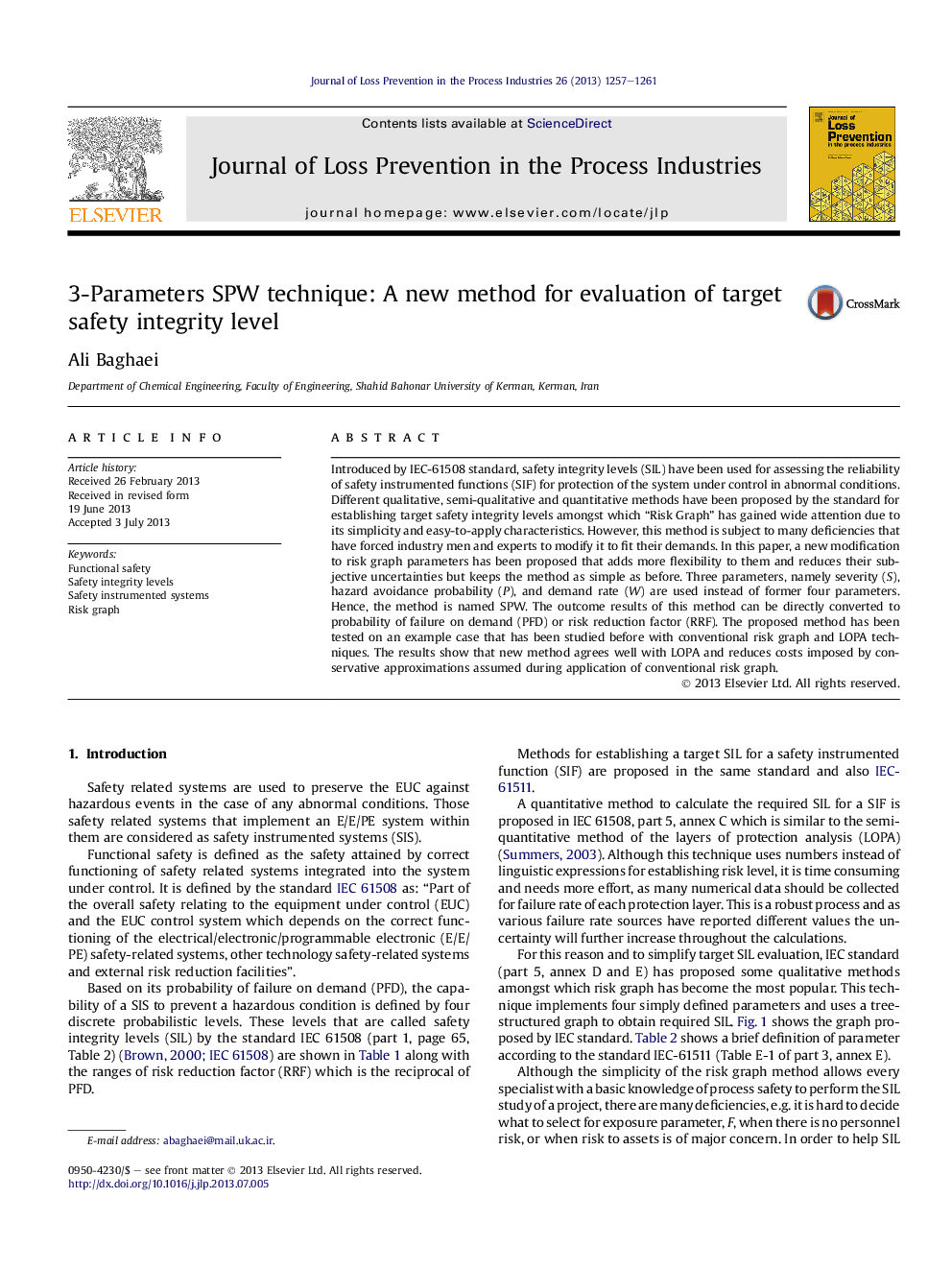| Article ID | Journal | Published Year | Pages | File Type |
|---|---|---|---|---|
| 586407 | Journal of Loss Prevention in the Process Industries | 2013 | 5 Pages |
•The deficiencies of conventional risk graph for evaluating safety integrity level (SIL) were discussed.•Consequence parameter (C) and exposure frequency parameter (F) were merged to define a new severity parameter (S).•The proposed approach uses three parameters of severity (S), probability of prevention (P) and demand rate (W).•The comparison of the new technique with other techniques shows that it is more accurate and less subjective.
Introduced by IEC-61508 standard, safety integrity levels (SIL) have been used for assessing the reliability of safety instrumented functions (SIF) for protection of the system under control in abnormal conditions. Different qualitative, semi-qualitative and quantitative methods have been proposed by the standard for establishing target safety integrity levels amongst which “Risk Graph” has gained wide attention due to its simplicity and easy-to-apply characteristics. However, this method is subject to many deficiencies that have forced industry men and experts to modify it to fit their demands. In this paper, a new modification to risk graph parameters has been proposed that adds more flexibility to them and reduces their subjective uncertainties but keeps the method as simple as before. Three parameters, namely severity (S), hazard avoidance probability (P), and demand rate (W) are used instead of former four parameters. Hence, the method is named SPW. The outcome results of this method can be directly converted to probability of failure on demand (PFD) or risk reduction factor (RRF). The proposed method has been tested on an example case that has been studied before with conventional risk graph and LOPA techniques. The results show that new method agrees well with LOPA and reduces costs imposed by conservative approximations assumed during application of conventional risk graph.
